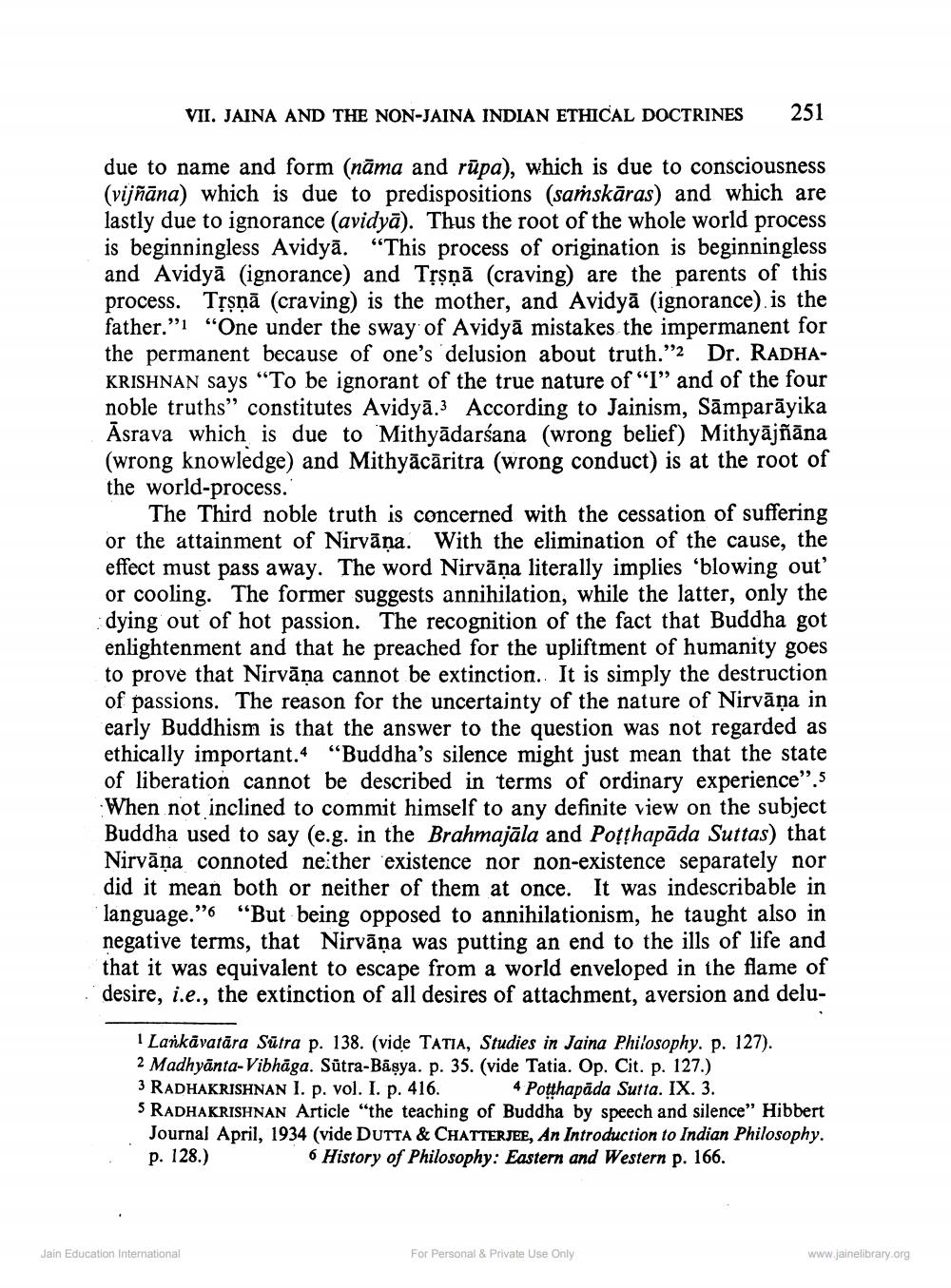________________
VII. JAINA AND THE NON-JAINA INDIAN ETHICAL DOCTRINES
251
due to name and form (nāma and rūpa), which is due to consciousness (vijñāna) which is due to predispositions (saṁskāras) and which are lastly due to ignorance (avidyā). Thus the root of the whole world process is beginningless Avidyā. “This process of origination is beginningless and Avidyā (ignorance) and Trsņā (craving) are the parents of this process. Trşņā (craving) is the mother, and Avidyā (ignorance) is the father."i "One under the sway of Avidyā mistakes the impermanent for the permanent because of one's delusion about truth.”2 Dr. RADHAKRISHNAN Says "To be ignorant of the true nature of “I” and of the four noble truths” constitutes Avidyā.3 According to Jainism, Sāmparāyika Asrava which is due to Mithyādarśana (wrong belief) Mithyājñāna (wrong knowledge) and Mithyācāritra (wrong conduct) is at the root of the world-process.
The Third noble truth is concerned with the cessation of suffering or the attainment of Nirvana. With the elimination of the cause, the effect must pass away. The word Nirvāṇa literally implies 'blowing out or cooling. The former suggests annihilation, while the latter, only the dying out of hot passion. The recognition of the fact that Buddha got enlightenment and that he preached for the upliftment of humanity goes to prove that Nirvāṇa cannot be extinction. It is simply the destruction of passions. The reason for the uncertainty of the nature of Nirvāṇa in early Buddhism is that the answer to the question was not regarded as ethically important.4 "Buddha's silence might just mean that the state of liberation cannot be described in terms of ordinary experience". When not inclined to commit himself to any definite view on the subject Buddha used to say (e.g. in the Brahmajāla and Potthapāda Suttas) that Nirvāṇa connoted neither existence nor non-existence separately nor did it mean both or neither of them at once. It was indescribable in language." "But being opposed to annihilationism, he taught also in negative terms, that Nirvāṇa was putting an end to the ills of life and that it was equivalent to escape from a world enveloped in the flame of desire, i.e., the extinction of all desires of attachment, aversion and delu
1 Larkāvatāra Sūtra p. 138. (vide TATIA, Studies in Jaina Philosophy. p. 127). 2 Madhyānta-Vibhāga. Sütra-Bāsya. p. 35. (vide Tatia. Op. cit. p. 127.) 3 RADHAKRISHNAN I. p. vol. I. p. 416. 4 Potthapāda Sutta. IX. 3. 5 RADHAKRISHNAN Article "the teaching of Buddha by speech and silence" Hibbert Journal April, 1934 (vide DUTTA & CHATTERJEE, An Introduction to Indian Philosophy. p. 128.)
6 History of Philosophy: Eastern and Western p. 166.
Jain Education International
For Personal & Private Use Only
www.jainelibrary.org




